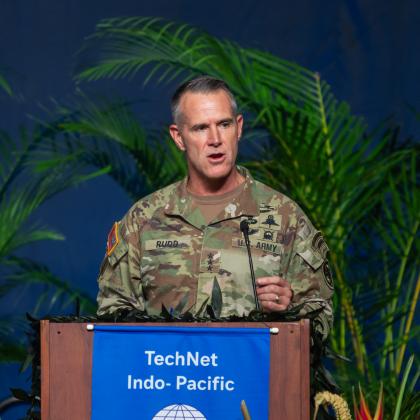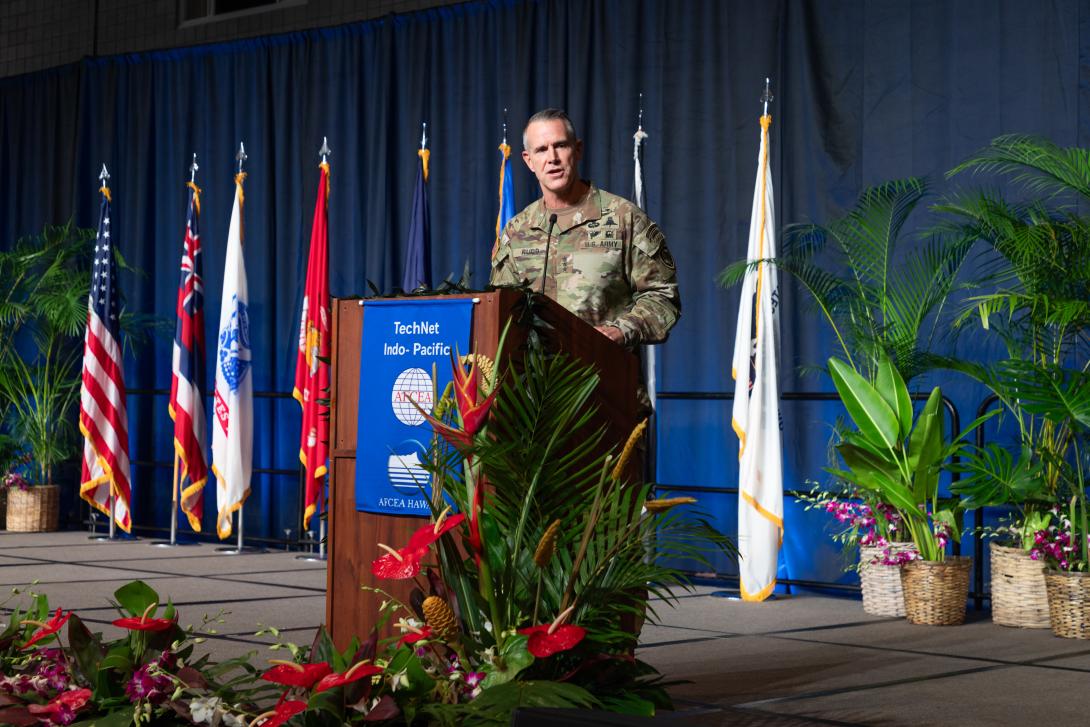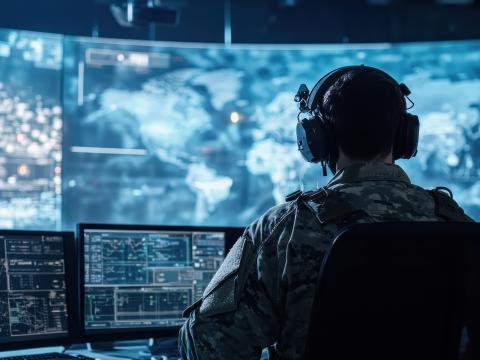How the U.S. Indo-Pacific Command Views Tech Priorities
The deputy commander of the largest American military combatant command, the U.S. Indo-Pacific Command, wants us to know that we are at a precipice, where the world is shifting, given the swirl of digital capabilities that will define the character of war into the future.
For the U.S. Indo-Pacific Command to prevail in the most important region to our national security, the military needs to advance several key capabilities, explained Lt. Gen. Joshua Rudd, USA, the U.S. Indo-Pacific deputy commander, speaking at AFCEA International’s TechNet Indo-Pacific conference on October 30 in Hawaii.
“The characteristics of warfare are changing, and they are changing rapidly, as you can imagine, underpinned by technology, and the digital world continues to move at a pace that is unbelievable,” he said. “We stand right now at a precipice of one of those moments where it is beginning to rapidly change.”
The main capability of importance, which Rudd’s boss Adm. Samuel Paparo, commander of U.S. Indo-Pacific Command, characterizes as a “mega” trend, is a resilient, secure, survivable network.
“The mega trend that underpins all of this, and perhaps most germane to this crowd, given the nature and the focus of this effort, is the ubiquitous competition for networks,” Rudd noted. “If you cannot network all these system capabilities together on an architecture that enables us to connect and apply and move data, move information, move updated software at the speed of war, none of that works.”
A network would enable, well, everything in battle, Rudd emphasized, including a sophisticated command-and-control kill web linked to our partners and allies across all domains.
“The competition is not just about hardware or software,” he stated. “It is about creating an integrated system that delivers decision superiority, as well as command and control. The side that masters cognitive operations, counter assault capabilities, survivable precision strike will shape the future security environment. But again, none of that will happen without the mega trend and the ability to connect it all on a resilient, survivable network that pushes data to the lowest level, to the edge, to enable the ability to deliver effects.”
Moreover, our adversaries understand this networked reality. They have been advancing their “informatized warfare” for decades, Rudd continued, with their military doctrine emphasizing systems confrontation, system destruction and warfare targeting.
The United States must have a sophisticated and secure, networked, combined, joint all-domain kill web to prevail against our adversaries, a difference that may be measured only in minutes or seconds.
“We need combination of scalable, resilient and secure networks to enable the best decision-making, to employ our forces with maximum utility and buy down the risk, not only to our forces, to our mission, but to our strategy,” the deputy commander explained. “We need, and now have, algorithmic, artificial intelligence and machine learning tools that compress the sensor to shooter chain below our adversary’s own doctrinal threshold.”
Here, the deputy commander cited an example of one technology used in the recent Valiant Shield exercise that offered a glimpse of what would be needed in the future.
In the theater, warfighters leveraged a commercial, edge rack running open-source model that was built in Austin, Texas, but trained in the Philippines, on a partner country range, he shared.
“There, it generated maritime fire-control solutions in two minutes, faster than what an adversary’s comparable land-based super complex system can do,” he said. “And we think that only gets faster. We think that continues to accelerate, even within the next couple of months.
Plans are underway to replicate that same rack for a maritime application—a landing platform deck—and positioned in modular data centers in Australia.
“Think about that,” Rudd stated. “It's joint. It's all domain. It's combined. It's at the edge, and it's evolving at the speed of innovation based on one single exercise. Our competitors design their kill webs. Kill webs to outrun our decision cycle. The cycle just reversed based on that description.”
Another battle differential, in greater development across the United States is attritable drones—with manufacturing ramping up in Colorado, Ohio and Indiana. It is a trend Paparo refers to as the “democratization of drones,” and is reshaping warfare at a breakneck speed, Rudd said. Drones will bring a military advantage to the country that can prevail.
“The question is not whether drones will transform warfare, but who will master the integration into joint operations first and do it the fastest,” Rudd purported. “Our answer is not found on the battlefield right now. It is found in industry, on the factory floor, [where they] are already pushing an attritable airframe out the door at unit cost, below the best export quote of traditional suppliers . . . And that is where the competition is.”

Consider how social media and artificial intelligence can now shape public opinion and political will faster than the movement of forces and their associated actions.
Militaries are examining how to apply drones either offensively or defensively, with forces leveraging unmanned systems as part of their effects that prepare an environment for the manned portion of warfare that would follow to seize and hold terrain, Rudd explained.
“This trend fundamentally changes the traditional calculus of assault warfare,” he estimated. “If I asked the infantry officers or planners in the room for an invading force, what is the correlation that you would have to factor in? A three-to-one calculus, right? That has completely been upended by the advent and the commoditization of unmanned systems.”
Furthermore, the complexity of drone warfare will only grow if the U.S. airframes produced involve open-source architecture and include the ability to produce and deliver real-time upgrades and connect and integrate with other industry partners' capabilities, the deputy commander offered.
Lastly, Rudd warned about the information environment and how, even in the last few years, information and cognitive operations have grown in importance.
“Consider how social media and artificial intelligence can now shape public opinion and political will faster than the movement of forces and their associated actions,” Rudd stressed.
“What happens on YouTube, Instagram, TikTok, that might affect whether we do or do not move troops and how fast they get there, and whether or not we should,” he said. “It will definitely influence populations and political decision-makers. Information operations, influence campaigns and cognitive warfare are all becoming central to how nations compete and fight wars.”
U.S. leaders must understand that U.S. adversaries are investing heavily in capabilities that target not just military systems but also the cognitive domain of decision-makers and populations, the deputy commander stated.
TechNet Indo-Pacific is organized by AFCEA International and AFCEA Hawaii. SIGNAL Media is the official media of AFCEA International.






Comments